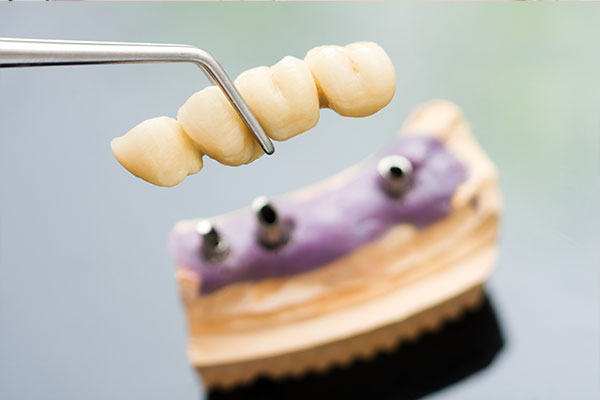A bridge is a non-removable restoration made to replace a missing tooth or teeth.
The steps in preparing and fitting a bridge are similar to those of a crown.
The teeth on either side of the gap are trimmed and covered with crowns which serve as anchors for the replacement tooth/teeth that are attached to the framework of the adjacent crowns.
The whole piece is then cemented firmly in place.
Oral hygiene must be kept at good levels for a bridge to have good long term prognosis, flossing under the bridge is an added daily hygiene routine.

After Care Tips
Local anaesthetic:
If your procedure required numbing, you will need to be careful not to bite your lip, cheek or tongue, the numbness can last anywhere from 2 – 8 hours after the appointment, also avoid hot beverages or food.
Crown or Bridge
- You will need to avoid eating anything hard or chewy on the temporarily cemented crown/bridge, they can be quite flimsy and can be flicked off quite easily.
- Try to avoid flossing and toothpicks.
- If the temporary does come off, give us a call to decipher whether we should re cement it or not.
- Your gum around the area and the tooth in question, will be tender and sensitive for a few days following the procedure, due to the work we have done on and around the tooth.
- Once the permanent has been inserted, you will need to avoid flossing and toothpicks for 24 hours, whilst the cement is setting.
- Certain flossing techniques will need to be followed with newly inserted bridges and crowns, this will be shown to you at the end of your appointment.
- The cementation will also cause some discomfort at the duration of the appointment and sensitivity can last up to 2 weeks.
